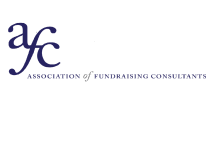Building a winning team that achieves fundraising goals
Fundraising can be a very rewarding experience for everyone involved – allowing those who share in the fundraising vision to get immense satisfaction when milestones are achieved. Having the right people in your team is an important constituent for any successful fundraising campaign. The leadership team is crucial, and the calibre of team members very important.
The first step before embarking on a recruitment campaign must be to ensure that you have a clear fundraising plan and case for support. These documents will articulate what your project is about, the benefits it will deliver, your objectives and a strategy for achieving the desired results. From my own personal experience, a good foundation upon which to base your fundraising plan and case for support is to conduct a resources study. Put simply, this is a form of pre-project consultation which will help map out any issues that could affect or influence your proposed fundraising campaign (please click here to read my recent article about resources studies).
With or without a resources study, a charity will need to identify and engage with all stakeholders. Each stakeholder group should be given the opportunity to connect with the fundraising project, learn about the charity’s goals and objectives, ask questions and provide their feedback.
The recruitment process may develop organically as a result of a consultation process. Through stakeholder discussions, a charity can ascertain its supporters and their appetite to be involved in the project’s delivery. The charity can then map these people against the different constituents of the project, e.g. by geographic location, skill or stakeholder type to ensure that everyone affected by or interested in the project is represented.
A strong team, that is representative of all stakeholders and potential donor income streams, is integral to any successful fundraising campaign and this was clearly evident in a very ambitious project for one of our clients. The Dean and Chapter of Norwich and the Norwich Cathedral Trust wanted to raise £4.75 million to renew an area where monastic buildings once stood. The target was later revised to £10 million. After careful preparation, funds started flowing and the project began to be seen as achievable. It was largely thanks to the breadth of expertise and commitment of the 250-strong team that the target was achieved (and an additional grant of £2.3 million over and above the £10 million target was secured from the Heritage Lottery Fund)!
The fundraising campaign ensured that it recruited individuals that were representative of a wide range of stakeholders. They included the church community, the Friends of Norwich Cathedral, the Diocese of Norwich, local government, Norfolk County Council, local trusts, national trusts, businesses and individuals in the County of Norfolk. They also represented various levels of giving, with certain volunteers having the skills and personal or professional networks to access large gifts while others could access community gifts. (Please click here to read more about this example.)
As this example illustrates, fundraising campaigns often need a lot of people to achieve results. With this comes the need for clear leadership, structure and organisation to ensure that everyone is working effectively towards the same objectives. At the top of the structure you will have a campaign chair who will take overall responsibility of the campaign. The Chair of the Norwich campaign was an excellent leader for the fundraising project. His commitment and passion for the cause was somewhat contagious and filtered out across the whole campaign. He worked in tandem with the Dean of Norwich, whose vision of the project and relentless drive helped the campaign to succeed.
A good fundraising consultant should provide advice and support on the recruitment of a campaign committee (or leadership team) and fundraising volunteers to support the Campaign Chair. The fundraising consultant should provide guidance to the committee to ensure that the plan stays on course and all activities are aligned to the core objectives. The consultant will also provide support if things go wrong and the campaign needs to be put on the right track. With larger fundraising campaigns, it is also worth selecting leaders for each of the stakeholder groups to help manage the campaign activities, the flow of information and direction.
There are occasions when fundraising projects don’t achieve the desired outcome. Poor leadership is one of the most common causes of failure. For example, if leaders show a lack of commitment and passion, they are unlikely to inspire others to support the campaign. Alternatively, if they are not prepared to listen to advice, engage with all stakeholders or adapt where change is needed, the project may not fulfil its ambitions.
However, with a clear fundraising plan and case for support, an effective leadership team, enthusiastic volunteers and supportive stakeholders, great things are achievable!
15.03.2017
For more information, call us on 01256 698 090 or send an email.



